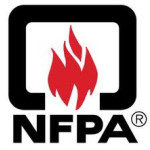- Industry: Fire safety
- Number of terms: 98780
- Number of blossaries: 0
- Company Profile:
Established in 1896, NFPA's mission is to reduce the worldwide burden of fire and other hazards on the quality of life by providing and advocating consensus codes and standards, research, training, and education.
A device in which one or more torches using fuel gas and oxygen are incorporated.
Industry:Fire safety
A device in which the sensing element is designed to be destroyed in the process of operation.
Industry:Fire safety
A device in which the sensing element is not ordinarily destroyed in the process of operation, whose restoration can be manual or automatic.
Industry:Fire safety
A device indicating an off-standard or abnormal condition by both visual and audible signals.
Industry:Fire safety
A device installed in an air distribution system, designed to close automatically upon detection of heat, to interrupt migratory airflow and to restrict the passage of flame. Fire dampers are classified for use in either static systems or for dynamic systems, where the dampers are rated for closure under airflow.
Industry:Fire safety
A device installed in series with the ac grounding (green, or green with yellow stripe) conductor of the shore power cable to block, in effect, the low voltage dc galvanic current flow, yet permit the passage of ac current normally associated with the ac grounding (green, or green with yellow stripe) conductor.
Industry:Fire safety
A device installed to limit radiant heat transfer through an air outlet or air inlet opening in the ceiling of a floor-or roof-ceiling assembly having not less than a 1-hour fire resistance rating. Such a device is described in the construction details for some tested floor-or roof-ceiling assemblies.
Industry:Fire safety
A device intended for discharging water for manual suppression or extinguishment of a fire.
Industry:Fire safety
A device intended for the protection of personnel that functions to de-energize a circuit or portion thereof within an established period of time when a current to ground exceeds some predetermined value that is less than that required to operate the overcurrent protective device of the supply circuit.
Industry:Fire safety
A device intended to protect equipment by interrupting the electric current to the load when a fault current-to-ground exceeds a predetermined value that is less than that required to operate the overcurrent protection device of that supply circuit.
Industry:Fire safety
